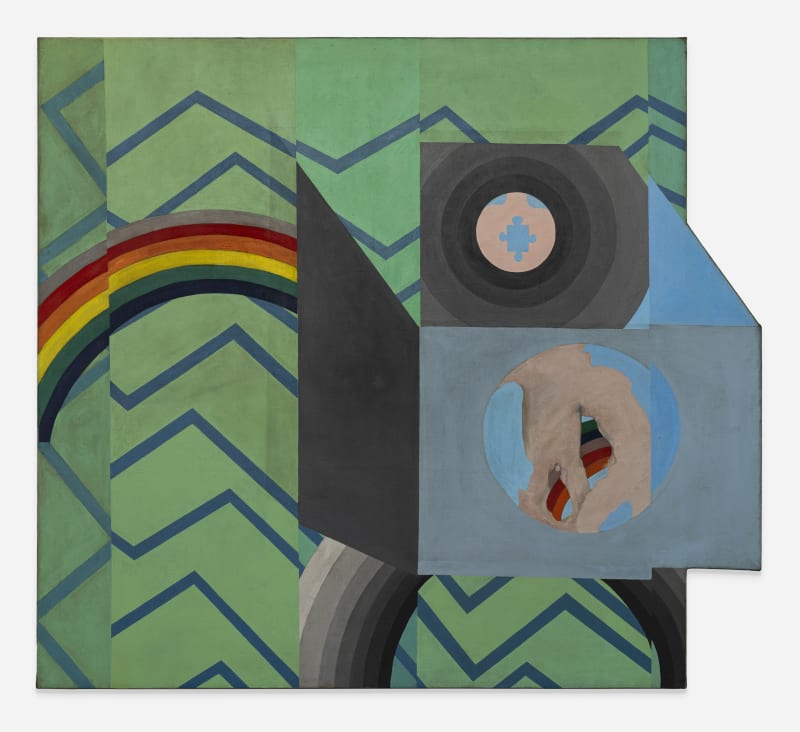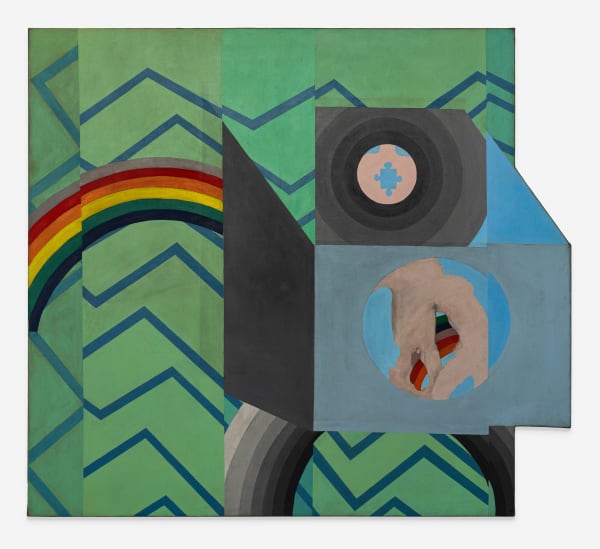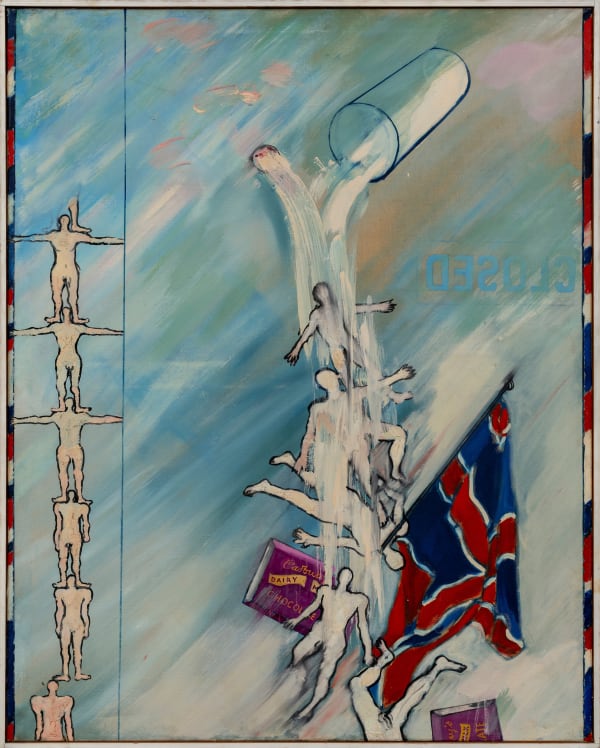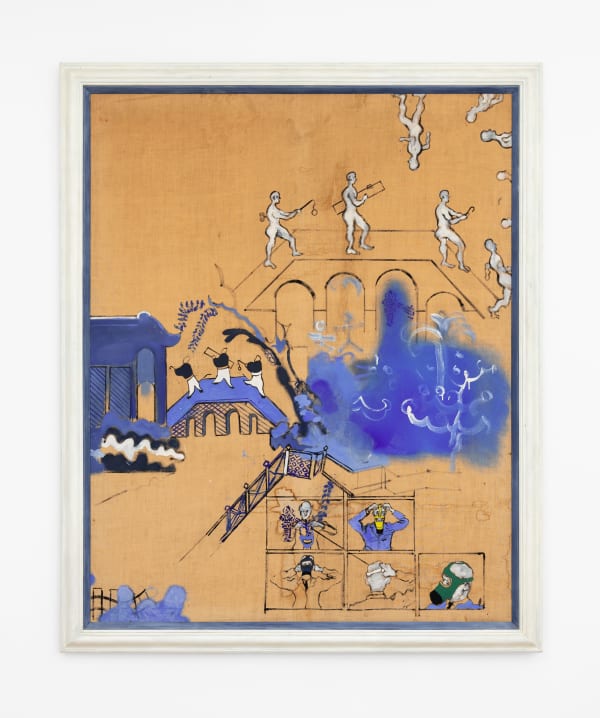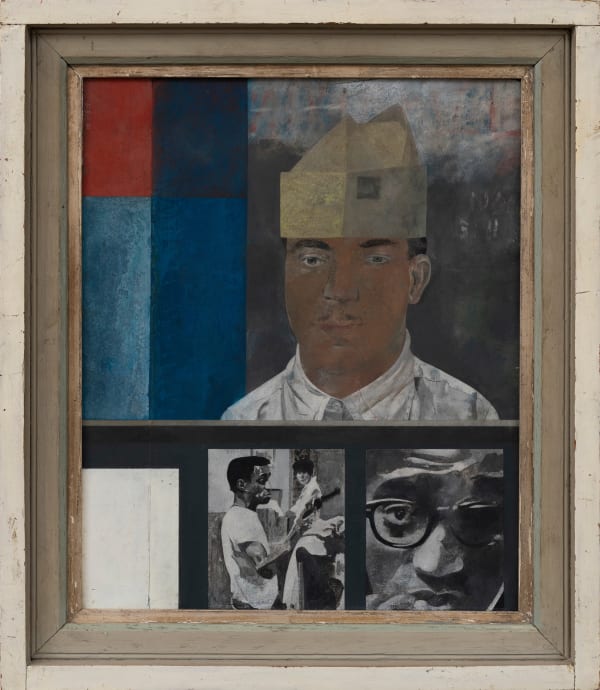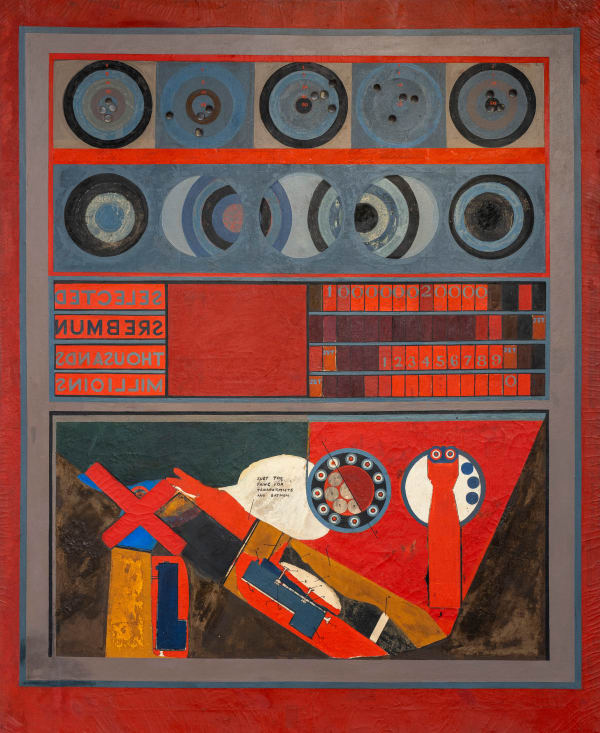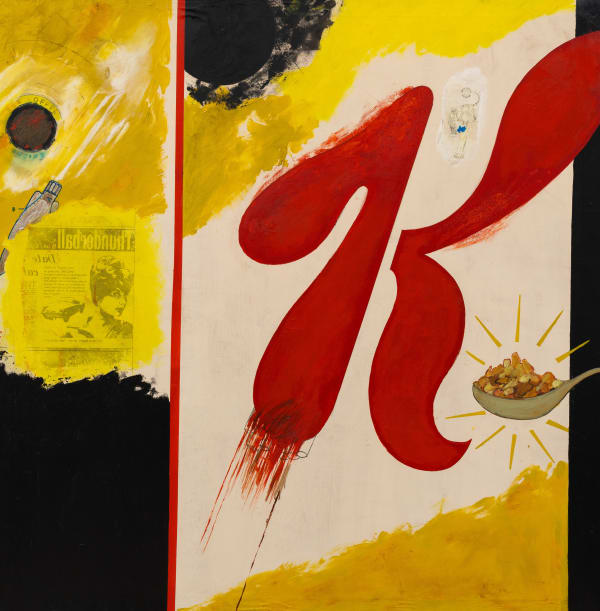Gazelli Art House London is pleased to present The Way Forward: Derek Boshier and the Sixties, the first posthumous solo exhibition dedicated to Derek Boshier (1937—2024).
Curated with renowned art historian Marco Livingstone, the exhibition focuses on works from the 1960s and charts the transformations in Boshier’s worldview and visual style, in parallel to wider changes in society. This landmark presentation revisits Boshier’s pivotal transition from pioneering Pop figuration to bold geometric abstraction, a shift catalysed by his travels to India in 1962 under a Commonwealth scholarship.
Together with fellow RCA students David Hockney, Allen Jones, Peter Phillips and R. B. Kitaj, he participated in the landmark Young Contemporaries exhibition at R.B.A. Galleries London in 1962, which propelled Pop Art to public prominence. Among the first exponents of British Pop Art, Boshier distinguished himself from contemporaries such as Peter Blake and Pauline Boty through his unique brand of satirical social commentary. Two important paintings from this formative student period of Boshier’s work, Special K (1961) and W for Euthanasia (1962), represent twin poles of this art, though both combine narrative elements, references to moral dilemmas and to the human predicament as reflected in the news, advertising, consumerism and popular culture. Special K, one of Boshier’s key Pop works, takes its striking central motif from a popular American breakfast cereal manufactured by the multinational company Kellogg’s and combines it with a prescient reference to James Bond predating the first Bond film by a year - and the Thunderball movie by four years - and to the American-Russian space race in the rockets firing upwards into the letter K. Euthanasia, painted within living memory of the Nazi death camps active during the artist’s own early childhood, presents a sequence of generic figures alongside portraits of men protecting themselves with gas masks, as a caustic perspective on a subject that remains just as contentious today in the discussions now taking place about assisted dying.
As early as 1963 Boshier had developed a distinctive approach to abstraction, embracing shaped canvases and vibrant geometric compositions. Moving away from his earlier more figurative Pop works, Boshier began employing dynamic colour contrasts and layered forms to create spatial ambiguity and a sense of movement. Although aligned with the aesthetics of post-painterly abstraction in the US by artists such as Kenneth Noland and Ellsworth Kelly, Boshier’s pieces are infused with the experiences when travelling in India, alongside the British Pop iconography he was so instrumental in shaping.
Boshier’s journey to India was transformative — his immersion in Hindu mythology and street iconography informed a strikingly new visual language. He encountered imagery woven into everyday life, from temple icons to barbershop posters, shaping a body of work that blended Pop sensibilities with symbolic motifs. His return to the UK marked a decisive shift — his compositions became bolder, more architectural and attuned to the mechanics of visual perception.
The painting Viewer (1963) is a pivotal work in Boshier’s formal evolution. It contains figures depicted through viewfinder or window-like shapes and rainbow motifs, but departs from a rectangular canvas format through the asymmetric shaped support, reinforcing the illusion of depth in the composition. This work speaks to Boshier’s enduring fascination with how media, advertising and urban space influence perception.
Paintings from this period were showcased in the seminal New Generation exhibition at Whitechapel Art Gallery (1964) and at Robert Fraser Gallery (1965). They interrogate perception and representation through complex spatial arrangements and optical interplay. This experimentation led to bold, structured abstractions that shared affinities with the architectural rhythms of urban space. Shaped canvases such as Highlights (1966), with its dramatic array of inverted triangles, explore the illusion of depth through geometric fragmentation.
Reflecting on his own practice, Boshier once remarked: “I like to think of them as Pop abstraction. I looked at neon signs and that’s where it came out. India changed my life. I became a much more tolerant person. And I became a fatalist. Fatalists are optimists.”
The latter half of the 1960s saw Boshier increasingly engage with conceptual and political currents in art. Questioning the function of painting in an era of mass-media saturation, he expanded his practice to incorporate ready-made materials, film and text-based works, aligning himself with socially engaged artmaking. His active participation in political movements — campaigning against the Vietnam War, nuclear armament and systemic racism — underscored his commitment to art as a tool for cultural critique.
Gazelli artist and contemporary of Boshier, Jann Haworth, describes these paintings as “a conversation stopper... no pigeonholing into Op or Pop; the painting is silent vision. A space at the heart of art town, a time and place to indulge in just looking, taking a long moment.” They embody Boshier’s ability to balance precision with raw energy, a visual dynamism that continues to resonate today.
Complementing the presentation of Boshier’s paintings from the 1960s in the gallery’s main space will be a selection of works by artists who were also part of the contingent at the Royal College of Art associated with the rise of Pop Art in Britain: from the 1959 intake with Boshier are R. B. Kitaj, David Hockney, Allen Jones and Peter Phillips; Pauline Boty, who began her studies a year earlier in the Stained Glass department and became a fast friend; Patrick Caulfield, who arrived at the College a year after Boshier; and three artists, Peter Blake, Joe Tilson and Richard Smith, who had completed their studies at the College in the mid-1950s but who became friends, mentors, and sources of inspiration to the younger artists including Boshier himself. Ken Russell’s celebrated BBC film Pop Goes the Easel, which introduced Pop Art to the general public, featured Boshier alongside Blake, Boty, and Phillips.
The exhibition also features key works by these artists, each shaping the trajectory of British Pop Art. David Hockney’s / Snakes (1962) subverts abstraction with coded homoerotic imagery, blending illusionism and flatness in a playful challenge to formalist painting. Pauline Boty’s Red Manoeuvre (1962) captures the energy of the Swinging Sixties, using bold colours and a red-uniformed figure to explore female sexuality and cultural iconography. Peter Blake’s Sammy Davis Jnr (1957—1960) reflects his fascination with celebrity culture, while Joe Tilson’s Page 16: Ecology, Air, Earth, Fire, Water (1969) merges screenprint and wood relief to address countercultural politics and his exploration of the Four Elements. Peter Phillips’s One Five Times/ Sharpshooter (1960) embodies the graphic dynamism of Pop, and Patrick Caulfield’s Pony(1964) marks his shift toward a refined, hard-edged style. Allen Jones’ Cockpit (1963) extends his fascination with the canvas as object previously seen in his bus paintings of 1962 and with the fusion of figuration with languages of abstraction. Richard Smith’s A Whole Year a Half a Day VIII (1966), one of a series of twelve three-dimensional paintings referencing the calendar months and the hours on a clock, provides abstract equivalents for the prosaic objects they reference, taking Pop concerns into more minimalist territory. Together, these works highlight the breadth of Pop Art’s experimentation, from figuration to abstraction, capturing a movement deeply attuned to the cultural pulse of its time.
Boshier’s 1960s abstractions cement his position within a transatlantic dialogue of formal experimentation while remaining deeply personal in their conceptual rigour. His ability to synthesise the energy of advertising culture with the concerns of abstraction speaks to his enduring relevance. The Way Forward: Derek Boshier and the Sixties offers a vital reconsideration of his artistic legacy.
-
 Derek Boshier, Empire, 1964
Derek Boshier, Empire, 1964 -
 Derek Boshier, Highlights, 1966
Derek Boshier, Highlights, 1966 -
 Derek Boshier, Viewer, 1963
Derek Boshier, Viewer, 1963 -
 Derek Boshier, Drinka Pinta Milka, 1962
Derek Boshier, Drinka Pinta Milka, 1962 -
 Derek Boshier, W for Euthanasia, 1962
Derek Boshier, W for Euthanasia, 1962 -
 Derek Boshier, Special K, 1961
Derek Boshier, Special K, 1961 -
 David Hockney, Three Snakes, 1962
David Hockney, Three Snakes, 1962 -
 Allen Jones, Cockpit, 1963
Allen Jones, Cockpit, 1963 -
 Peter Blake, Portrait of Sammy Davis Jr., 1957-60
Peter Blake, Portrait of Sammy Davis Jr., 1957-60 -
 Patrick Caulfield, Pony, 1964
Patrick Caulfield, Pony, 1964 -
 R. B. Kitaj, Homage to Herman Melville, 1960
R. B. Kitaj, Homage to Herman Melville, 1960 -
 Richard Smith, A Whole Year a Half a Day VIII , 1966
Richard Smith, A Whole Year a Half a Day VIII , 1966 -
 Peter Phillips, One Five Times/Sharpshooter, 1960
Peter Phillips, One Five Times/Sharpshooter, 1960 -
 Joe Tilson, Page 16 : Ecology, Air, Earth, Fire, Water, 1969-70
Joe Tilson, Page 16 : Ecology, Air, Earth, Fire, Water, 1969-70
-

Tuesday Talk | The Way Forward: Derek Boshier and the Sixties
June 24, 2025On 24 June, Gazelli Art House invites artist and writer, and Head of Painting at the RCA, Dr. Kamini Vellodi, writer and curator Andrew Renton,...Read more -

The Way Forward: Derek Boshier and the Sixties Gallery Tour
Gallery Tour June 7, 2025For London Gallery Weekend, Gazelli Art House led a tour through our current exhibition, The Way Forward: Derek Boshier and the Sixties . Described by...Read more
-

Ocula | Derek Boshier
June 3, 2025Ocula Advisory picks Derek Boshier's Empire (1964) as a must-see artwork during London Gallery Weekend.Read more -

Haven | The Way Forward
May 20, 2025The Haven team celebrates The Way Forward: Derek Boshier and the Sixties as a landmark exhibition providing an evolutionary view of the British Pop Art...Read more
